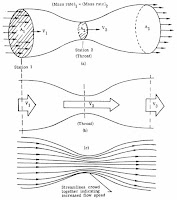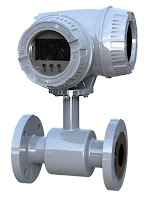
Natural gas is a hydrocarbon gas mixture consisting primarily methane, but includes a host of other chemical components. Accurate natural gas flow measurement usually requires the measurement of the fluid’s temperature and pressure in addition to flow. Additional constraints on natural gas measurement may include the physical space available or possibly configuration and weight of the metering system. Some of the fluid metering technologies require specific lengths of pipe, both upstream and downstream of the meter for proper function.
Before any technology decisions are made, discussions with equipment vendors and/or design engineers are recommended to ensure proper technology selection and installation design.
Depending on the application, flow rate, installation access, and desired accuracy, there are a number of technology options for natural gas metering. In general, measurement of natural gas volumetric flow rate is represented in standard cubic feet per hour (scfh) or per minute (scfm). The actual mass of gas flowing past a point of measurement changes with its temperature and pressure. Density changes resulting from temperature and pressure differences can result in differences between the energy content of similar volumes of the gas. To equalize the effect of density variations when metering gas, conditions are referenced against standard temperature and pressure conditions, hence standard cubic feet (scf) instead of actual cubic feet (acf). Gas flowmeters must compensate for density differences between standard conditions and actual conditions to accurately define standard flow rates.
The most common volumetric gas metering devices fall into one of the following categories:
- Positive displacement
- Differential pressure
- Velocity
POSITIVE DISPLACEMENT
A positive displacement meter functions by the fluid physically displacing the measuring mechanism and this displacement becomes the metered value. Of relevancy to natural gas measurement, the two predominant technologies are the diaphragm meter (most common) and the rotary meter. In each case, the volume of gas for measurement physically impinges on a measuring element (flexible diaphragm or rotary blower) to increment a recording dial or other output. The primary advantage of positive displacement flow meters is there are no straight-run piping requirements to establish a flow pattern that can be accurately metered. The primary disadvantage of positive displacement meters is higher pressure drops experienced across the meter at peak flow rates.
There are multiple types of differential pressure meters: orifice flow meter, venture flow meter, and annubar flow meter. All differential pressure meters rely on the velocity-pressure relationship of flowing fluids for operation.
DIFFERENTIAL PRESSURE
There are multiple types of differential pressure meters: orifice flow meter, venture flow meter, and annubar flow meter. All differential pressure meters rely on the velocity-pressure relationship of flowing fluids for operation.
Orifice Flow Meter
The orifice element is typically a thin, circular metal disk held between two flanges in the fluid stream. The center of the disk is formed with a specific-size and shape hole, depending on the expected fluid flow parameters (e.g., pressure and flow range). As the fluid flows through the orifice, the restriction creates a pressure differential upstream and downstream of the orifice proportional to the fluid flow rate. This differential pressure is measured and a flow rate calculated based on the differential pressure and fluid properties.
Venturi Flow Meter
The venturi flow meter takes advantage of the velocity- pressure relationship when a section of pipe gently converges to a small-diameter area (called a throat) before diverging back to the full pipe diameter. The benefit of the venturi flow meter over the orifice flow meter lies in the reduced pressure loss experienced by the fluid.
Annubar Flow Meter
The annubar flow meter (a variation of the simple pitot tube) also takes advantage of the velocity-pressure relationship of flowing fluids. The device causing the change in pressure is a pipe inserted into the natural gas flow.
VELOCITY
There are multiple types of velocity meters: turbine flow meter, vortex-shedding flow meter, and fluid oscillation flow meter. Velocity meters determine fluid flow by measuring a representation of the flow directly. Because the fluid’s velocity is measured (i.e., not the square-root relationship to determine velocity as with differential pressure meters), velocity meters can have better accuracy and usually have better turndown ratios than other meter types.
Turbine Flow Meter
A multi-blade impellor-like device is located in, and horizontal to, the fluid stream in a turbine flow meter. As the fluid passes through the turbine blades, the impellor rotates at a speed related to the fluid’s velocity. Blade speed can be sensed by a number of techniques including magnetic pick-up, mechanical gears, and photocell. The pulses generated as a result of blade rotation are directly proportional to fluid velocity, and hence flow rate.
Vortex-Shedding Flow Meter
A vortex-shedding flow meter senses flow disturbances around a stationary body (called a bluff body) positioned in the middle of the fluid stream. As fluid flows around the bluff body, eddies or vortices are created downstream; the frequencies of these vortices are directly proportional to the fluid velocity.
Fluid Oscillation Flow Meter
A fluid oscillation flow meter uses sensor technology to detect gas oscillations, which corresponds to the flow rate through the meters internal throat design.
For more information on any flow measurement requirement, visit Thompson Equipment (TECO) at http://www.teco-inc.com or call 800-528-8997 for immediate service,









